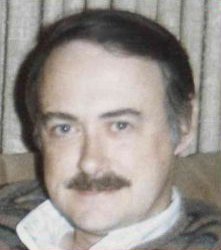Cancer: The First Cousin of Scar Tissue
Normal cells divide when there is a reduction in pressure, when the nearby remains of a dead cell are removed. The nearby cells easily detect this change in pressure. They change shape, their microtubules lengthen, and chemical clues are generated as well. The organism responds by growing replacement cells.
When there is a sudden reduction in pressure from a wound - a nearby opening of the skin envelope, there's a rushed production of emergency (and ugly) replacement cells: scar tissue. We propose that cancer is a malfunctioning version of this scar-forming machinery. The cancer "thinks" it's doing us a favor by creating bogus scar cells.

Chronic scarring, a statistical "hotbed" for mutations, has been seen to lead to soft tissue cancers, sarcomas. Chronic surface aggravation (i.e. smoking, hardened fecal matter, kidney gravel, sunburn, chemotherapy) seems to spawn colorectal cancer, lung cancer, and prostate cancer. Perhaps the organism "thinks" it's time to make scar tissue because of a perceived reduction in pressure at this irritated surface.
The significance of pressure: Initial indications
- It is known that scar tissue forms faster and better when suction is applied to an open wound:
"Negative Pressure Wound Therapy" [1].
- Elevated pressure, presumably simulating wound closure, slows down
scar tissue production [2].
- Change in external pressure is known to change the shape of cells [8].
-
High external pressure has been observed to shorten microtubules [3],
and reduced pressure lengthens them [4], possibly a pressure-gauging function
of these microtubules in action.
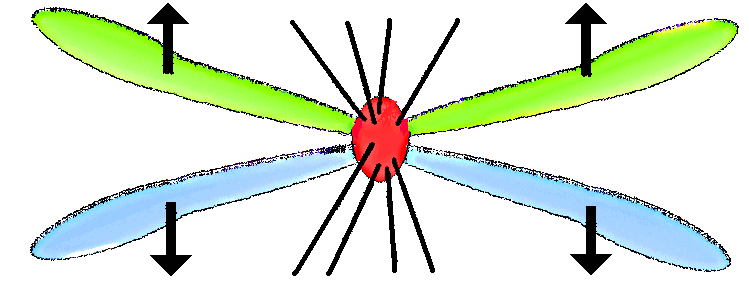 High pressure slows down the growth of tumor cells [5].
High pressure slows down the growth of tumor cells [5].
- High pressure also slows down the growth of whole tumors [6].
Is this extra pressure counteracting the tension at the kinetochores, caused by
depolymerization of the microtubules [7]?
Other possible pressure-related factors are: Poor muscle tone, especially in older persons, topological locations on organs with less local pressure (next to bone, etc.), polyps, low blood pressure.
Calling for three experiments; hopefully the active researchers in this field will perform them:
- Negative Pressure Wound Therapy: Does it work because the suction distorts the shape of the "tensegrity"
structures? Or is it because of reduced overall ambient pressure? We need to know.
Place a lab animal with an open wound into a normal-oxygen low-pressure chamber. Does the wound-healing work as well under overall low pressure as it does under suction? 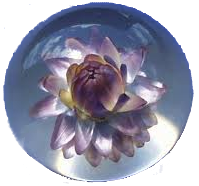 Using a hypodermic needle, inject an organic glue (!) into and around a lab animal's
tumor; perhaps mixed with a chemotherapy agent. The glue will harden into a solid (that's how glue works)
and will immobilize the tumor - not unlike the process of encasing a flower in a transparent paperweight.
Now, nothing goes in, nothing goes out; and the organism "thinks" that "the scar skinning-over process has
successfully completed: no need to make more." How will the cancer respond? Blue mussel glue or it's synthetic
might be an initial candidate [9].
Using a hypodermic needle, inject an organic glue (!) into and around a lab animal's
tumor; perhaps mixed with a chemotherapy agent. The glue will harden into a solid (that's how glue works)
and will immobilize the tumor - not unlike the process of encasing a flower in a transparent paperweight.
Now, nothing goes in, nothing goes out; and the organism "thinks" that "the scar skinning-over process has
successfully completed: no need to make more." How will the cancer respond? Blue mussel glue or it's synthetic
might be an initial candidate [9].
This idea may evolve into a useful supplement to surgery in some cases. The cancer may shrink, and/or become easier to remove, and any outside spot that is missed will reveal itself shortly by further growth and can be repaired by a subsequent touch-up. We might also use this technique to seal off an opening left by a surgical removal, to preclude the releasing of metastatic cells; and possibly for other, non-cancer related surgeries as well.
Note that we need to be concerned here about provoking metastasis. Note also that the usual procedure, removal of a tumor, signals the need for a rushed production of replacement cells!- But the real problem is when metastasis has already begun. Again, pressure may be the answer.
Place a lab animal known to have metastatic cancer into a normal-oxygen high-pressure chamber. Will the metastasized cells be tricked into "thinking" their "job is done", and all go to sleep? If they do, we're closing in!
While we're on the subject of pressure, a couple of off-the-wall questions: Do people with high blood pressure get less leukemia?
Do deep sea animals get cancer?
![]()
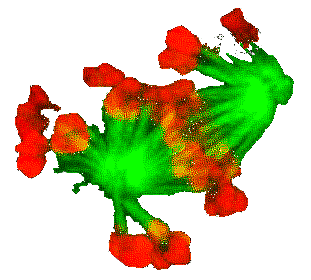
Looking ahead, better understanding of the role of local pressure will provide us with improved background knowledge of normal cell division and of scar formation; perhaps also leading to a deeper understanding of the causal dynamics of cancer, and by numerous multiple pathways, to more and better treatments; even a cure! We might also discover unexpected new causative factors of cancer.
On a personal note, I am the only member of my family that has not died from cancer; (my younger brother was clinically dead for two seconds). I feel sure I have made a contribution here. As a retired diagnostic engineer, I've learned one important thing: if you want to fix it, learn how it's supposed to work when it's not broken: My Rule #7
References
- "Negative Pressure Wound Therapy." Omni. 21 March 2012
http://med-nexus.co.uk/?docid=49&document=Negative+Pressure+Wound+Therapy"> - Stanley et al. "Pressure elevation slows the fibroblast response to wound healing." J Vasc Surg. 2005 Sep
http://www.ncbi.nlm.nih.gov/pubmed/16171604 - Lewis G. Tilney et al. "Studies On The Microtubules In Heliozoa, III." JCB. April 1, 1966
http://www.jcb.org/cgi/content/abstract/29/1/77 - Nishiyama, M. et al. "Development of a high-pressure microscope and its application to biological
systems." International Symposium on Micro-NanoMechatronics and Human Science. 5-8 Nov. 2006
http://ieeexplore.ieee.org/xpl/freeabs_all.jsp?arnumber=4110384 - Tina Hesman Saey. "Pressure keeps cancer in check." Science News. January 26, 2013
http://www.sciencenews.org/view/generic/id/347168/description/Pressure_keeps_cancer_in_check - Herndon BL, Lally JJ. "Hyperbaric pressure effects measured by growth of a transplantable tumor in
the C3H/HeN mouse." J Natl Cancer Inst. 1984 Sep
http://www.ncbi.nlm.nih.gov/pubmed/6590914 - E. Nogales, V. H. Ramey. "Structure-function insights into the yeast Dam1 kinetochore complex". J of Cell Sci 122: 3831–3836. 1 November 2009
http://jcs.biologists.org/content/122/21/3831 - Donald E. Ingber, Misia Landau. Scholarpedia, 7(2):8344. (2012)
http://www.scholarpedia.org/article/Tensegrity - Dan Ferber. "Mussel Glue Could Help Repair Birth Defects." Science. February 16, 2013
http://sciencenow/2013/02/mussel-glue-could-help-repair-bi.html
| Solving | Cancer | Method | Space | Fibonacci | Checkers | Map | |
|---|---|---|---|---|---|---|---|

| 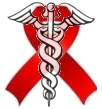
| 
| 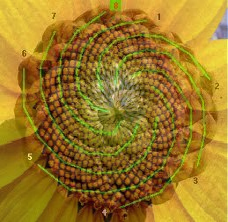
| 
| 
|
||
